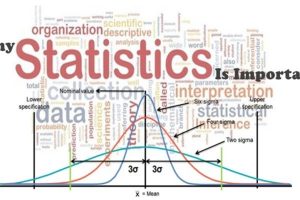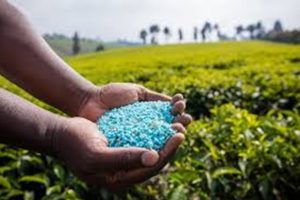BY ABEBE WOLDEGIORGIS
In this digital era, utilizing reliable information is becoming irreplaceable means for attaining rapid economic growth. In this regard, the development of space science further supports the exploration, gathering and dissemination of information which can be utilized as inputs for various sectors. Sectors that benefit from the information are agriculture, industry, education, health, disaster prevention; transport, city administrations, natural resource and environment protection, and finance institutions among others.
Aiming to promote the information gathering and dissemination, the Ethiopian Space Science and Geospatial Institute recently conducted a meeting with stakeholders. The main theme of the meeting was assisting the nation’s development action plan via integrated geospatial information frame work.
Berihu Alemayehu, a Coordinator of the National Infrastructure Development Center at the Space and Geospatial Information Institute said that geospatial information serves as input for all sectors in their endeavor to achieving development goals.
According to Berihu, the institution provides information gathered by sophisticated apparatus to various institutions and among others to the Ministry of Agriculture, Roads Authority, Ministry of health and others. It also takes relevant information from these institutions.
Information emanated from the institutions is compiled and preserved as data. Hence, managing the information by combining in one center and utilizing under common legal framework is essential. Characteristically, information is vulnerable to theft and robbery. Therefore, the proper preservation and utilization of it would be a task that should not be left for tomorrow.
Unlike creativity, according to the coordinator, some resources are limited and non renewable. Hence, planning resource development should consider this reality and identifying the specific sectors should be given the upper hand. To this end, conducting feasibility study for the informed use of the country’s natural resources is essential. This includes identifying proper location to plant industries; explore minerals; build hydropower dams and develop tourism destination.
Earlier to implementing the development plan, gathering and analyzing the information for the specified project should be preliminary task. Besides, human and natural resources should be managed in a coordinated manner.
In line with this, it should be understood that the objective why the information is gathered, how much it is, when it was compiled and the way the consumers can utilize it must be clearly defined and standardized. As information has global value, it has to be governed by global framework.
For the fact that the world has become globalized from time to time, any data is vital for the digital transformation. In addition, as it is also vital for innovation, it must be backed by technology and preparing legal frame work should be taken into account.
As it is well known by everyone, agriculture plays the key role in the economy of countries like Ethiopia while livestock sector, as a part of agriculture, also contributes its own part in uplifting Gross Domestic Product of the country. However, as the experience Ethiopia has entertained so far, it is vulnerable to drought and extreme weather conditions. As a result, it remains subsistence and stagnant and for this reason, most farmers are forced to earn a precarious living. Asked whether the geospatial information helps to alleviate problems that hamper the sector’s development or not, Berihu said that it plays pivotal role in tackling the problems and enhance productivity of the sector.
Gathering information by satellite enables to identify the quality of soil and the health condition of the crops along with their productivity. Furthermore, it indicates the areas where fertilizer and water run short and provides information about the degraded farm land with the right kind of treatment should be administered.
The Ethiopian Geospatial Institution currently covers 40 percent of the land surface of the country by air photograph which is known us “lead up” technology and if it continues upgrading the institution working environment, it can play a leading role in Africa.
As to him, gathering and disseminating information is one thing but utilizing the source as input is another thing that needs proper capacity. The information should be governed by policy and standard. Yet, there is limitation in this regard at the national level and filling the gap with trained man power that includes the stakeholders is essential. To this end, The United Nations is the major global partner of the Geospatial Information Institute.
Gregory Scot, a Country Representative of the Integrated Geospatial Information FrameWork under the auspicious of the UN, for his part said that the stakeholders should play crucial role in realizing the goal that geospatial information to be used as input for the development plan.
At a country level, action plan with the support of the UN is also being implemented. The Geospatial Information utilization system in each country needs governance, technology and information data. He further said that nine strategic pass ways for Ethiopia are prepared and different institutions are working jointly for its accomplishment.
The UN section for geospatial information was established by the year 2011. The information gathered by the geospatial system brings geography and humanity together. For better accomplishment of the utilization of the information, empowered leadership and timely action are very important. He further said that policy, legal system and education are elements of the Integrated Global Information Frame work.
The information can serve for disaster prevention and preparedness, to prevent pandemic, mitigate climate change and global warming and protect global supply chain of industrial products. In general, there are about 250 action plans which are being implemented by geospatial information system at global level.
United Nations and the World Bank made arrangements originally to provide a basis and
guideline for lower and middle income countries as a reference when developing
and strengthening their national infrastructures.
However, as the Framework has evolved, and will continue to evolve as a living document in the years ahead, it is vividly clear that many high income and developed countries will also significantly benefit from the integrated and inclusive strategic nature of the Framework. The Framework provides a strategic guidance that enables a country to prepare and implement specific action plans.
Direct benefits will encapsulate new and innovative approaches to national geospatial information management, implementing integrated evidence-based decision-making solutions, and maximizing and leveraging national information systems that are tailored to individual country’s situations and circumstances.
As to Gregory, the Framework aims to assist countries to move towards e-economies,
e-service and e-commerce to improve citizens’ services provision. Besides, it targets to build capacity of using geospatial technology; enhance informed government decision-making processes; facilitate private sector’s development to take practical actions to achieve the digital transformation. It is also projected to bridge the geospatial digital gap in the implementation of national strategic priorities and the 2030 Agenda for Sustainable Development.
The Framework and its guidance were built on the existing Global Geospatial
Information Management (UN-GGIM) jointly by the United Nations Committee of Experts and the World Bank. It aims to identify gaps that will require further input, especially related to the establishment of geospatial information management practices in developing countries.
The Integrated Geospatial Information Framework provides a basis and guide for developing, integrating and strengthening the geospatial information management.
Ethiopian herald June 8/2022





